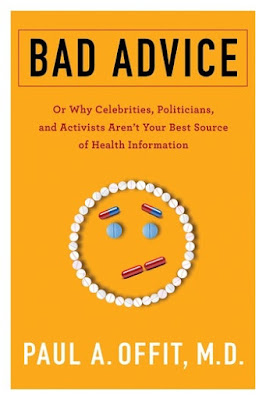Volume 2, Issue 5: Take the Advice, not Just the Medicine

Take the Advice, not Just the Medicine Paul A. Offit, M.D., Bad Advice: Or Why Celebrities, Politicians, and Activists Aren’t Your Best Source of Health Information . New York: Columbia University Press, 2018, xiv + 251 pages. $16.95 Paperback ISBN 9780231186988 Science popularization and the health sciences have two interesting components from the viewpoint of the history of philosophy of science: science popularization and the health sciences. Let’s take them in order. Popular science or science popularization has a long tradition in the English-speaking world; nonetheless, it didn’t get much attention from professional philosophers of science, or even from historians (of philosophy of science). From one aspect, this might be wholly understandable—popular works do not have much influence on academic debates and professional and institutional philosophical trends and arguments; as the name suggests, it is popular, directed towards non-professionals.